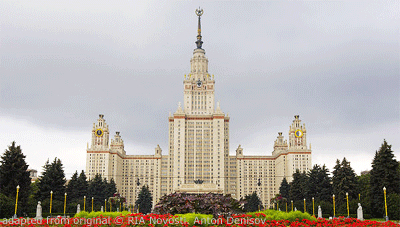Experts Discuss Threats Shaping Russia’s Alliances

(Russia Matters – russiamatters.org – Nini Arshakuni and Daniel Shapiro – April 8, 2019 – russiamatters.org/blog/experts-discuss-threats-shaping-russias-alliances)
The authors are graduate student associates at Harvard’s Davis Center for Russian and Eurasian Studies and Russia Matters.
MGIMO’s Igor Istomin raised the point that Russia also seeks to establish alliances and partnerships to counter “ideational threats” coming from the West. Istomin argued that the U.S., in its efforts to promote liberal democracy, has created a binary system in which countries following the liberal model are considered to meet the “standards of appropriateness,” whereas countries deviating from this model in the West’s eyes are treated as “pariahs.” Istomin contended that through this stark delineation of “good” and “evil” regimes, the U.S. has pushed some countries from the latter category to establish closer partnerships to counter liberal ideology. “Russian-Turkish relations is a telling example,” according to Istomin. “We see that both [the] Russian and Turkish political regimes are very much challenged. That was especially evident after and during the coup [in Turkey] in 2016. So, despite many disagreements, Russia and Turkey came together.” Istomin concluded that alliances aimed at countering ideational threats are often described as simply “transactional,” but they are, in fact, “much more robust and stable” because the ideational threats will not fade away anytime soon.
Istomin’s model did not go unchallenged. The Fletcher School’s Monica Toft, one of two discussants on the panel, criticized the speaker’s portrayal of the United States as the only power in charge of advancing the liberal world order, arguing that U.S. allies are often deeply involved as well. Moreover, she noted that there is significant debate on whether the “liberal world order” exists at all. Toft also said that the warming relations between Russia and Turkey should be thought of as a defensive agenda or an “authoritarian collusion” to counter the U.S., its Western allies and its ideology. The second discussant, Mihaela Papa, also of the Fletcher School, argued in turn that the point of counter-ideology is to generate new processes that can lead to new ideas about the international system.
A third speaker, MGIMO’s vice rector Andrey Baykov, focused mainly on asymmetric alliances and the respective roles of their “major powers” and “junior partners.” The main tradeoff he described was the provision of a security guarantee to a junior partner by a major power in exchange for limitations on the former’s sovereignty. He also spoke of the public recognition and legitimation that asymmetric alliances give to the major power. Unfortunately, Baykov did not apply this theory to Russia and its allies. Toft called on him to expand his analysis of asymmetrical alliances to include states other than the U.S. and controversial issues other than the Iraq war and fighting ISIS. (Baykov used these two examples to illustrate that, in the U.N., U.S. allies’ support for Washington on controversial issues is much higher than that of the General Assembly as a whole, thus showing the “mobilization effect of asymmetric alliances.” However, Papa questioned Baykov’s methodology in analyzing U.N. voting patterns, saying that U.S. allies’ closer cooperation with Washington in international organizations may not necessarily be a direct result of alliance dynamics, but could stem from factors not covered in Baykov’s paper.)
Article also appeared at russiamatters.org/blog/experts-discuss-threats-shaping-russias-alliances, with different images, and without the Amazon ads, bearing the notice: “© Russia Matters 2018 … This project has been made possible with support from Carnegie Corporation of New York,” with a footer heading entitled “Republication Guidelines” linking to: russiamatters.org/node/7406, which bears the notice, in part:
“If you would like to reprint one of these articles, a blog post written by RM staff, one of our infographics or a fact-check, we ask that you follow these guidelines:
- Include a prominent attribution to Russia Matters as the source and link back to the original at RussiaMatters.org.
- Retain the hyperlinks used in the original content.
- Do not change the meaning of the article in any way.
- Get an ok from us for non-substantive changes like partial reprints or headline rewrites and inform readers of any such modifications (e.g., This article first appeared on the Russia Matters website with the headline “Russian Election Interference in Trump’s Own Words”).
- Let us know about the reprint and send a link!
Please note that Russia Matters cannot grant permissions for third-party content, including articles, photographs and other materials not produced by our team.
Questions? Email us at RussiaMatters@hks.harvard.edu.”
